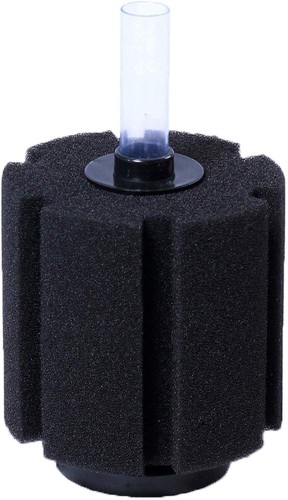What Is Possible
“Clean” water is usualy also clear water, but there are exceptions. You can have very “healthy” water which is so green with suspended algae that you cannot see through it. You can also have very “clear” water which is uninhabitable by fish because of the accumulation of nitrogen wastes. (See discussion of the Cycle).
However, cloudy water is almost never clean, and cloudy water is absolutely never good for fish. If your water has a haze in it, you have an immediate action item: Clear that haze!
It is possible (and entirely practical) to have water which is “gin” clear down to eight feet deep. I have always enjoyed water which is this clear. I have filtered water in numerous different ways and I have accumulated considerable experience with the things which work, and the things which do not.
There are numerous things which contribute to, and take away from, water clarity. What follows is a listing of the most common causes.
The most common cause of poor clarity in the water is the over-growth of bacteria. Most often, this is caused by overfeeding. Excessive numbers of bacteria can grow in an overfed system, causing a whitish or tan colored haze in the water. These are the worst possible hazes to subject your fish to.
Sometimes a person will have a poor filtration system which allows particles of a very fine nature to remain in suspension. This is another common source of hazing in water and is completely unhealthful for the fish. Improvements in filtration are sometimes easy to make simply by using a more refined filter media. For example, if you use a extremely fine sponge material in the last “phase” of water filtration, you may tend to get a more “polished” effect in terms of water clarity. Many people have discovered that the use of bead filtration also affords excellent clarity, but filtration is not “everything” as we will soon discuss.
My tanks at the office have sponge filtration which does a great job in clarity, especially if I use a pond flocculating agent.
Sometimes the source-water used to fill a facility or pond will have a lot of minerals and other dissolved solids in it. This is not uncommon with rural wells. This water should be passed through a water purifier before use. There are quite a few of these water purifiers on the market, including a “reverse osmosis” unit which uses a series of extremely thin membranes to remove solids from the water. Reverse osmosis can make crystal clear water out of most any fluid source.
The final cause of water hazing which needs to be discussed is the overgrowth of suspended green algae, also known as “greenwater”. The algal bloom can be “minor” permitting the fish to be viewed through a pale green haze, or it may be severe, obscuring your view of all objects below the surface. Green algal blooms (greenwater) is almost entirely harmless to fish. In fact, the Japanese, and many American ornamental fish growers believe that green water is the healthiest water to rear fish in.
One consideration of green water is that during the day, the suspended algae will produce prodigious amounts of dissolved oxygen.
There are several things which can clear hazey water
- Strong aeration
- Coagulants with Sponge or other fine filtration
- Increasing the size of the filter
- Reducing the Fish population and or size
- Suspending feeding til the haze clears
- Live plants flocc haze with plant agglutinins
- Increase the alkalinity and hardness of the water where feasible.







